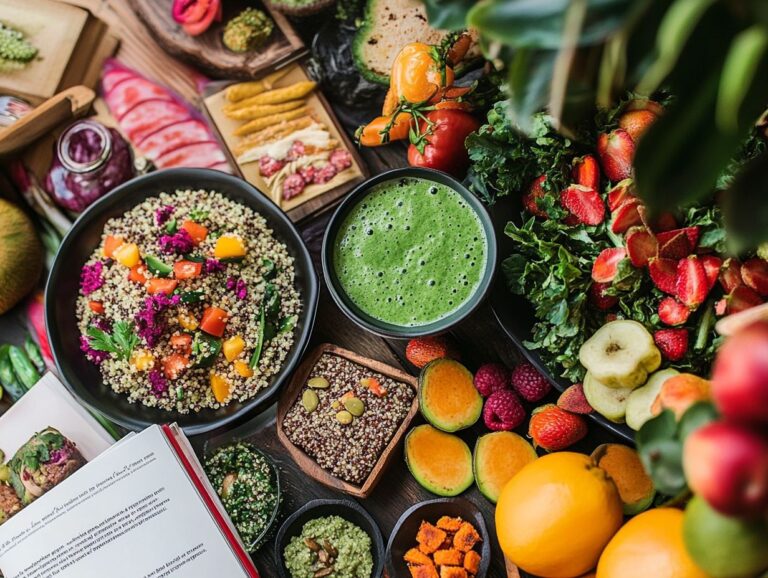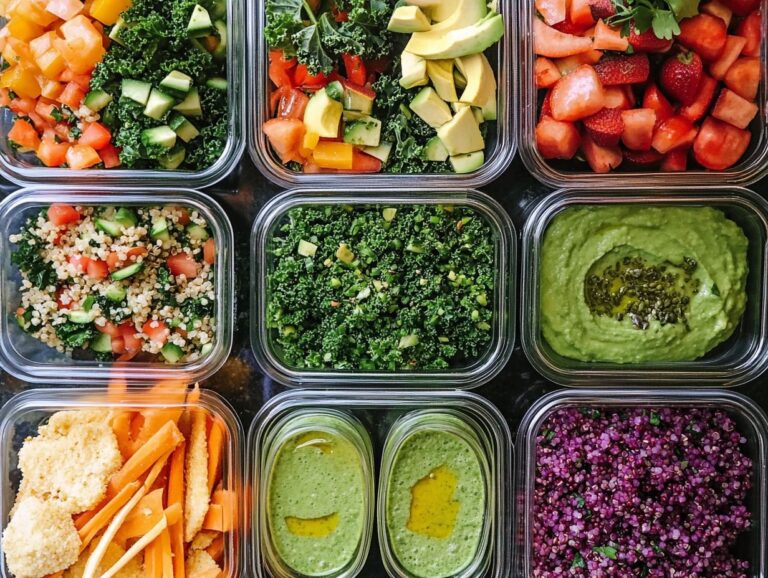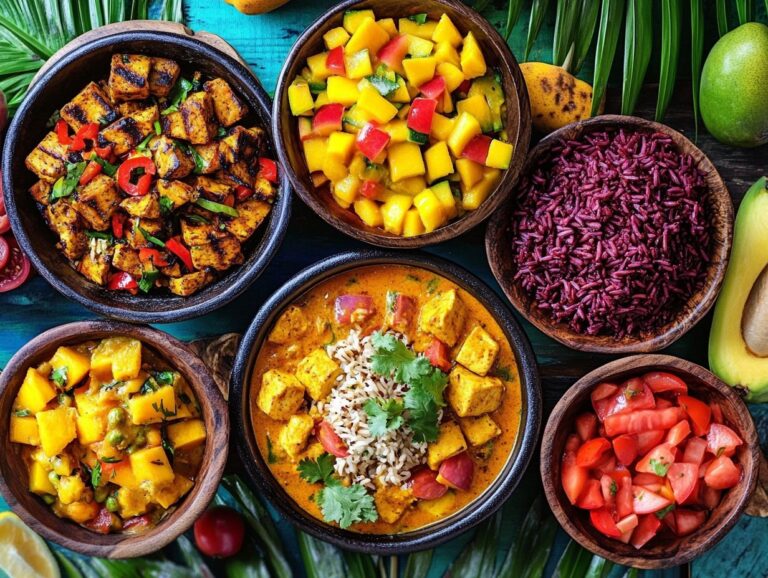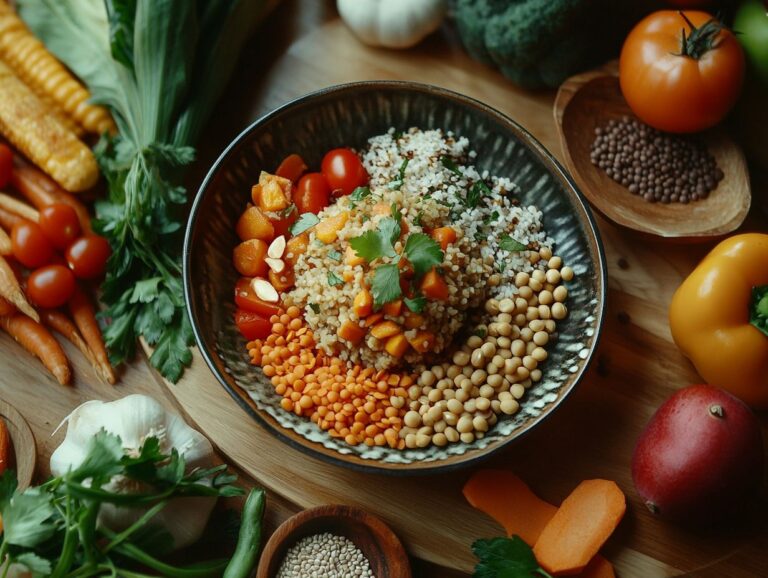Exploring Vegan Jewish Cuisine presents a delightful fusion of tradition and contemporary dietary choices. This journey uncovers the rich tapestry of classic Jewish dishes reimagined with plant-based alternatives that preserve their cultural essence. From comforting Vegan Matzo Ball Soup to sweet Vegan Challah Bread, we provide mouthwatering recipes and highlight the wholesome ingredients that make them shine. Discover tips for incorporating these meals into your diet and learn about their health benefits, turning every bite into a celebration of flavor, nutrition, and wellness.
What is Vegan Jewish Cuisine?
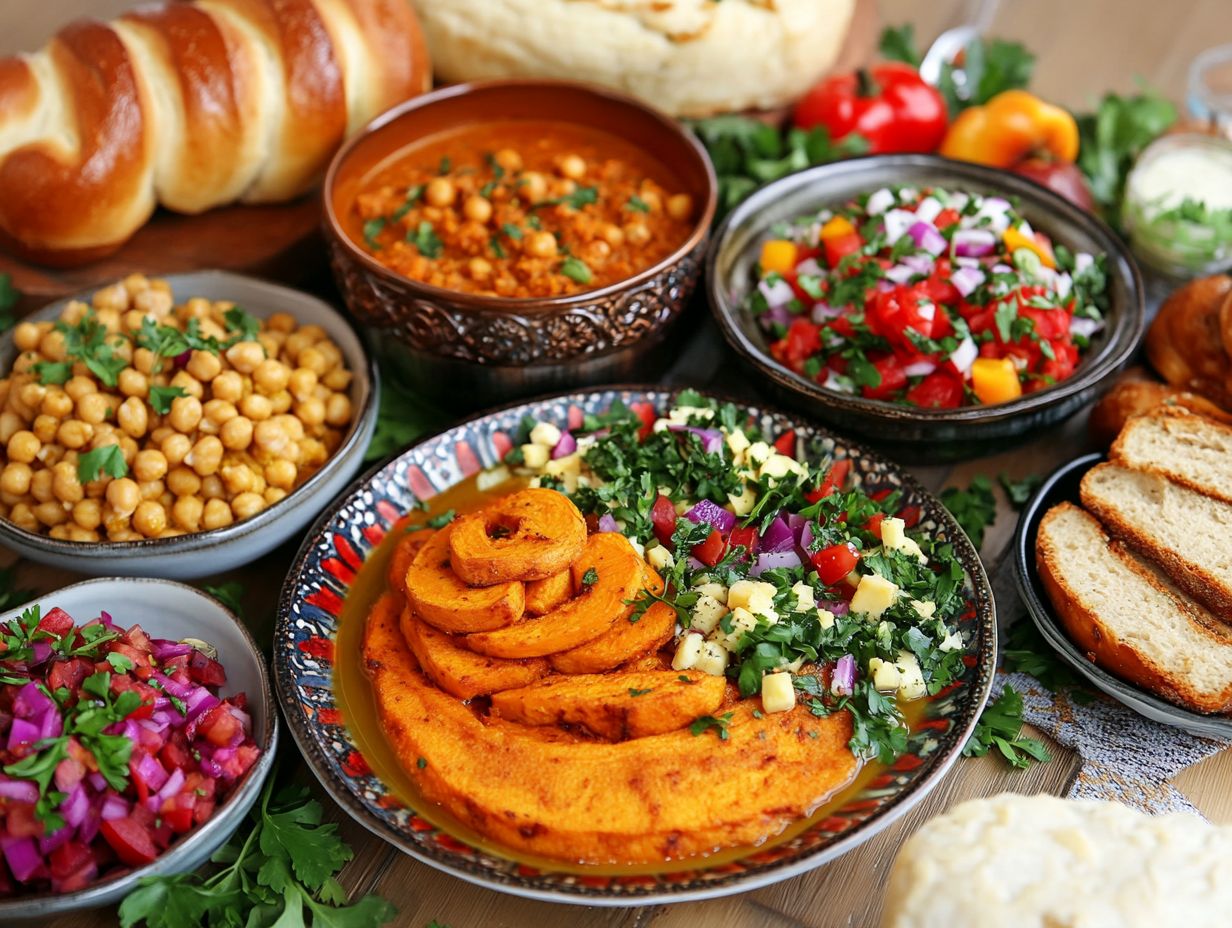
Vegan Jewish cuisine combines traditional Jewish food preparation with modern vegan or plant-based eating. This culinary practice includes meals that honor the cultural aspects of Jewish life while promoting ethical eating habits, sustainable practices, and inclusivity, especially during events like Passover and Seder.
Vegan Jewish cuisine adheres to key elements of Jewish dietary laws and kosher guidelines, ensuring that ethical values and traditions are upheld in dishes that nourish both the body and the soul.
Seasonal vegetables, legumes, spices, and grains are utilized to create and reinterpret traditional meals and recipes. This approach accommodates dietary restrictions for individuals with different beliefs without compromising the taste, texture, or cultural significance of traditional Jewish dishes.
Traditional Jewish Dishes and their Vegan Alternatives
Traditional Jewish dishes are celebrated for their rich flavors and cultural significance.
With the rise of veganism, many of these beloved recipes have been successfully adapted to create delicious vegan alternatives.
Dishes like matzo ball soup, challah bread, kugel, and latkes can now be enjoyed by everyone, regardless of dietary preferences, by using alternative ingredients such as tofu, tempeh, and various plant proteins like chickpeas and lentils.
Vegan Matzo Ball Soup
Vegan matzo ball soup is a heartwarming reinterpretation of the traditional Jewish dish, offering the same comforting flavors and textures while being entirely plant-based, adhering to kosher dietary restrictions. This soup, made with ingredients like chickpeas, seasonal vegetables, and herbs, serves as a nourishing and flavorful meal that embodies the essence of Jewish culinary traditions.
By focusing on plant proteins and incorporating spices such as dill and garlic, vegan matzo ball soup satisfies both health-conscious eaters and those who cherish the classic tastes of their heritage.
The key components of this soup go beyond mere substitution; they enhance and pay respect to tradition. Instead of using eggs and matzo meal, the matzo balls can be crafted from a blend of ground chickpeas, almond flour, and a hint of kala namak to replicate an eggy essence, adding a layer of innovation to traditional dishes.
A variety of fresh vegetables, including carrots, celery, and onion, along with herbs like dill and parsley, simmer together in a rich vegetable broth, creating a vibrant base that is both aromatic and inviting.
For those looking to personalize their bowls, a splash of lemon juice or a sprinkle of nutritional yeast can elevate the dish, allowing it to be uniquely theirs while still honoring the heritage and cultural significance of this beloved recipe.
Vegan Challah Bread
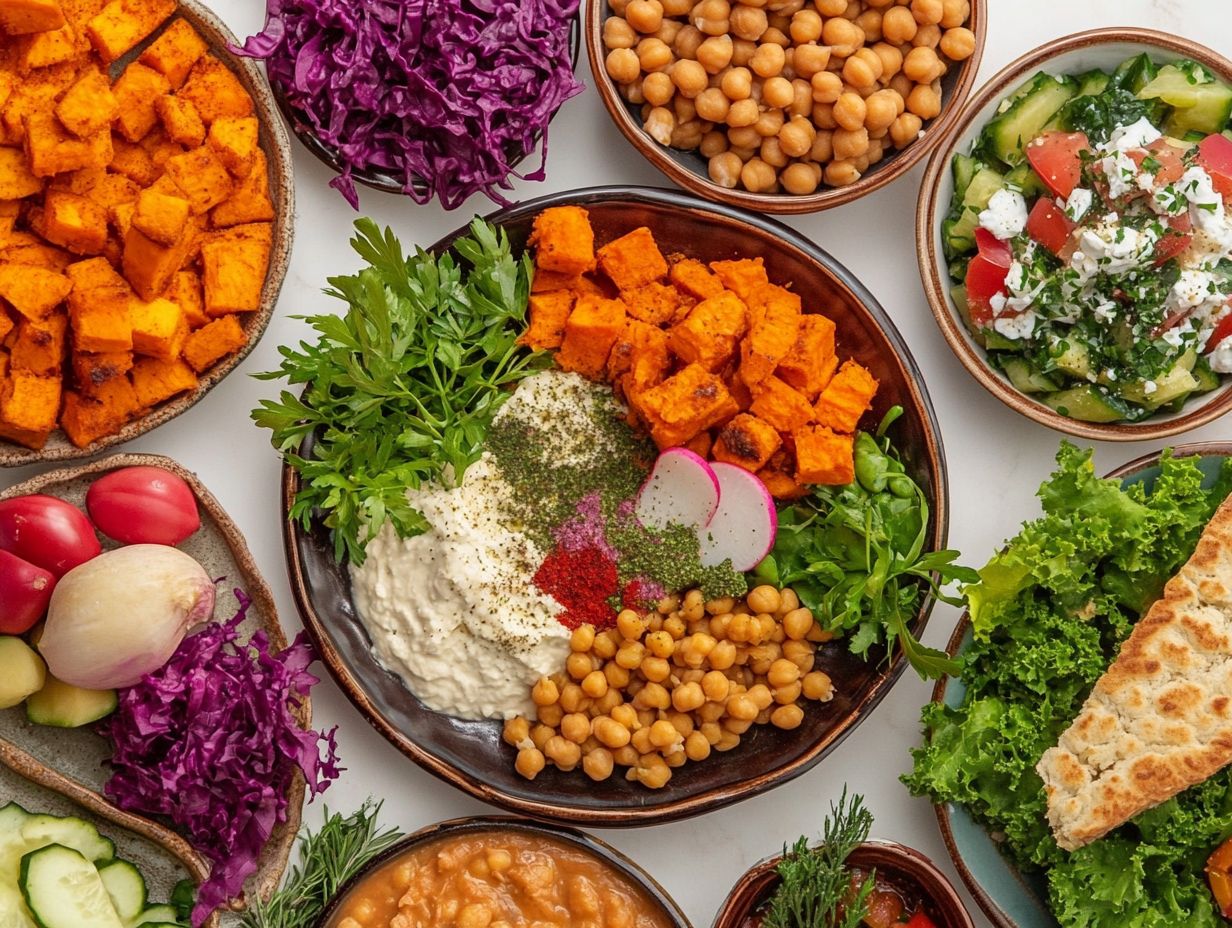
Vegan challah bread is a delightful variation of the traditional Jewish braided bread, characterized by its soft and fluffy texture without the use of dairy or eggs. This version is made using almond milk and aquafaba, creating an egg-free dough that rises just as well as the traditional recipe.
By incorporating spices such as cinnamon and nutmeg, vegan challah pays homage to cultural traditions while modernizing them for contemporary family gatherings and religious celebrations, especially during Jewish holidays. This variation is perfect for those seeking a plant-based alternative while still honoring traditional customs, particularly during significant Jewish holidays like Shabbat and Rosh Hashanah.
The preparation of the bread involves kneading to develop the gluten in the dough, ensuring the desired airy quality. When baked, the exterior turns a beautiful golden-brown while the interior remains tender and light.
It can be enjoyed on its own or paired with a variety of spreads, highlighting the harmonious coexistence of tradition and innovation. Families can savor this versatile version with sweet toppings or use it as a base for sandwiches.
Vegan Kugel
Vegan kugel is a Jewish dish that has been adapted to be entirely plant-based, using innovative vegan cooking techniques. It can be prepared in both sweet and savory variations, catering to different preferences.
The base ingredients often include sweet potatoes, apples, or zucchini, and can be flavored with spices like nutmeg, cinnamon, or even cayenne pepper for a unique twist. This filling and nutritious meal exemplifies the diversity of plant-based cooking while meeting dietary needs without compromising the beloved taste and texture of traditional Jewish flavors.
Sweet versions may feature cherries or raisins and may be sweetened with maple syrup or agave nectar, while savory versions can include caramelized onions, mushrooms, or spinach for a more complex flavor profile.
Cooking techniques such as roasting vegetables like beets, peppers, and eggplant to enhance their natural sweetness and using aquafaba as an egg substitute to bind the ingredients contribute to the improved taste and texture of the dish.
Vegan kugel is commonly served at holiday meals and family gatherings, demonstrating how traditional recipes can be modified to be inclusive for everyone, maintaining the integrity of Jewish cuisine.
Plant-Based Ingredients Used in Vegan Jewish Cooking
Vegan Jewish cooking focuses on plant-based substitutes that maintain the flavors of traditional recipes while offering healthy and hearty alternatives for the modern Jewish community.
Key ingredients in this cuisine include a diverse array of legumes, grains, seasonal vegetables, and flavor-enhancing spices. Meals are enhanced with nutritious and flavorful components by incorporating various food swaps, such as using quinoa instead of pasta, cauliflower in place of rice, and tahini to enrich dressings and dips.
Common Ingredients and their Uses
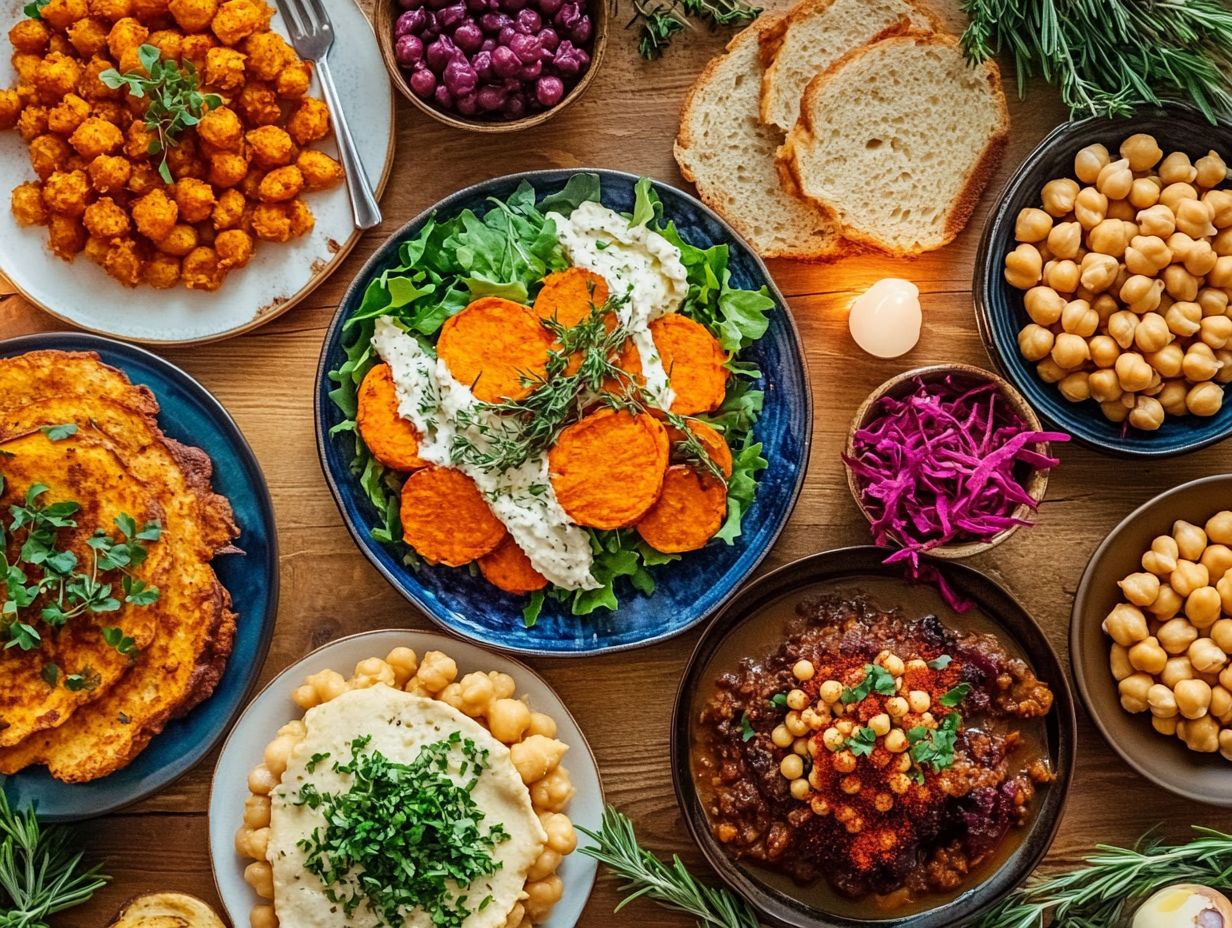
Common ingredients in vegan Jewish cooking include fresh herbs and spices, legumes, and grains. Herbs such as dill, parsley, and thyme, along with spices like paprika, cumin, turmeric, and black pepper, are key in creating diverse flavor profiles in various Jewish cooking styles.
Legumes such as beans, lentils, and peas, as well as grains like barley and quinoa, serve as excellent sources of plant-based proteins, ensuring that meals are both satisfying and nutritious. These ingredients celebrate a rich cultural heritage while allowing for creativity in the kitchen.
For example, chickpeas can serve as a comforting alternative to matzo balls in a vegetarian version of matzo ball soup. Quinoa can be used as the base for a tabbouleh-style salad, providing a good source of protein and fiber. Additionally, tahini adds a creamy texture and flavor to dips and dressings while contributing calories and nutrients, enhancing the overall dining experience.
By incorporating these common ingredients into our daily meals, we can create nutritious and satisfying dishes that honor the cultural heritage of Jewish cuisine while promoting a healthy and fulfilling vegan lifestyle.
How to Incorporate Vegan Jewish Meals into Your Diet
Vegan Jewish foods consist of meals, snacks, and drinks that either originate from Jewish culture or are inspired by traditional Jewish cuisine, all while being entirely plant-based, appealing to those following a plant-based diet.
Incorporating vegan Jewish foods into your diet allows you to savor traditional flavors from Jewish culture while adhering to a plant-based lifestyle. By planning meals that utilize traditional Jewish recipes and substituting or eliminating animal products, you can create a diverse menu that celebrates Jewish heritage while promoting nutritious, ethical eating and considering dietary restrictions.
Employing meal prep strategies alongside new cooking methods and appliances can simplify the process of trying out new recipes and flavors.
Tips for Meal Planning and Preparation
Meal planning and food storage are essential for successfully incorporating vegan Jewish recipes into everyday routines, ensuring a diverse selection of healthy, satisfying meals throughout the week. By planning meals around seasonal fresh vegetables, legumes, and grains, you can make your dishes tastier and healthier while also promoting sustainability, simplifying meal prep.
Utilizing kitchen tools such as meal prep containers and food processors can save time and effort when preparing delicious plant-based recipes, enhancing the enjoyment of homemade meals.
Here are some tips to enhance your meal planning and make the most of your vegan cooking techniques:
- Batch Cook: Prepare basic ingredients like quinoa, lentils, and roasted vegetables in larger quantities, and then use different sauces and toppings throughout the week to keep meals interesting.
- Use Airtight Containers: Store perishable ingredients in airtight containers to maintain their freshness.
- Cook with Seasonal Ingredients: Incorporating seasonal ingredients like fresh produce and grains into your meal planning can enhance flavor and nutrition. Visiting a local farmers’ market can provide inspiration for seasonal recipes.
- Vary Flavors: Experiment with different spices and herbs to change the flavor profiles of your meals. Even the simplest recipes can become exciting with a few adjustments in seasoning.
Making the Most of Meal Planning and Preparation in a Vegan Jewish Diet Plan

Kitchen Tools: Investing in kitchen appliances such as a food processor, slow cooker, or multi-cooker (like an Instant Pot) can streamline meal planning and preparation by reducing cooking time, improving food presentation through efficient culinary techniques. A food processor can quickly prepare dips, sauces, or spreads, while slow cookers or multi-cookers are perfect for soups, stews, or one-pot meals.
Meal Prep Containers: Use containers with separate compartments for storing different ingredients, such as tofu, chickpeas, and lentils. This approach helps maintain the freshness and texture of each component while simplifying meal planning and enhancing your plant-based diet.
Ingredient Storage: Proper storage is crucial for maintaining the quality of your ingredients, such as carrots, beets, and cabbage. Herbs, leafy greens, and other vegetables can quickly lose flavor and freshness, so investing in airtight containers can help you plan meals more effectively and extend their shelf life, making your vegan recipes more flavorful.
Seasonal Cooking: Planning meals around seasonal ingredients, such as zucchini, eggplant, and peppers, not only enhances flavor but also ensures that your meals are more nutritious since seasonal produce has not traveled long distances. Local farmers’ markets are excellent sources of inspiration for delicious seasonal recipes, including traditional Jewish dishes like borscht and shakshuka.
Varying Meals: Alter the flavor of your meals by using a variety of spices, herbs, and sauces like tahini or vegan pesto. Simple recipes can be made exciting by rotating through different combinations, adding depth to your vegan cooking techniques and flavor profiles.
Health Benefits of Vegan Jewish Cuisine
The health benefits of vegan Jewish cuisine are extensive, promoting a plant-based diet rich in whole foods that supports overall well-being while accommodating various dietary restrictions, including kosher and ethical eating practices.
This plant-based approach incorporates a variety of legumes, grains such as quinoa and rice, and seasonal vegetables, delivering essential nutrients, vitamins, and minerals necessary for optimal health.
Vegan Jewish meals are not only ethical but also help reduce the risk of chronic illnesses by focusing on wholesome, satisfying dishes that nourish both the body and the mind, such as vegan brisket and matzo ball soup.
Nutritional Benefits and Potential Health Improvements
The nutritional benefits of vegan Jewish cuisine are substantial, providing a wealth of vitamins, minerals, fiber, and culinary techniques that are essential for maintaining a healthy lifestyle. By adopting a plant-based diet that emphasizes legumes, grains, and seasonal vegetables like mushrooms and sweet potatoes, individuals can experience improvements in heart health, digestion, and overall well-being.
This dietary approach, which replaces traditional animal-based ingredients with ethical and sustainable alternatives, such as vegan alternatives like tofu and nutritional yeast, aligns with a growing awareness of health and environmental concerns.
Research shows that incorporating foods such as chickpeas, lentils, and whole grains not only enhances nutritional intake but also supports cardiovascular health. For example, a study published in the Journal of the American Heart Association highlights that diets rich in plant-based proteins can lower cholesterol levels and reduce the risk of heart disease, contributing to a more heart-healthy lifestyle.
Experts also emphasize the importance of fiber-rich vegetables common in vegan Jewish cooking, such as cabbage and sauerkraut, as they promote a healthy gut microbiome, which is vital for proper digestive function. The synergistic effect of these ingredients underscores the numerous health benefits inherent in this culinary tradition, including comforting and hearty meals suitable for family gatherings and Jewish holidays.

